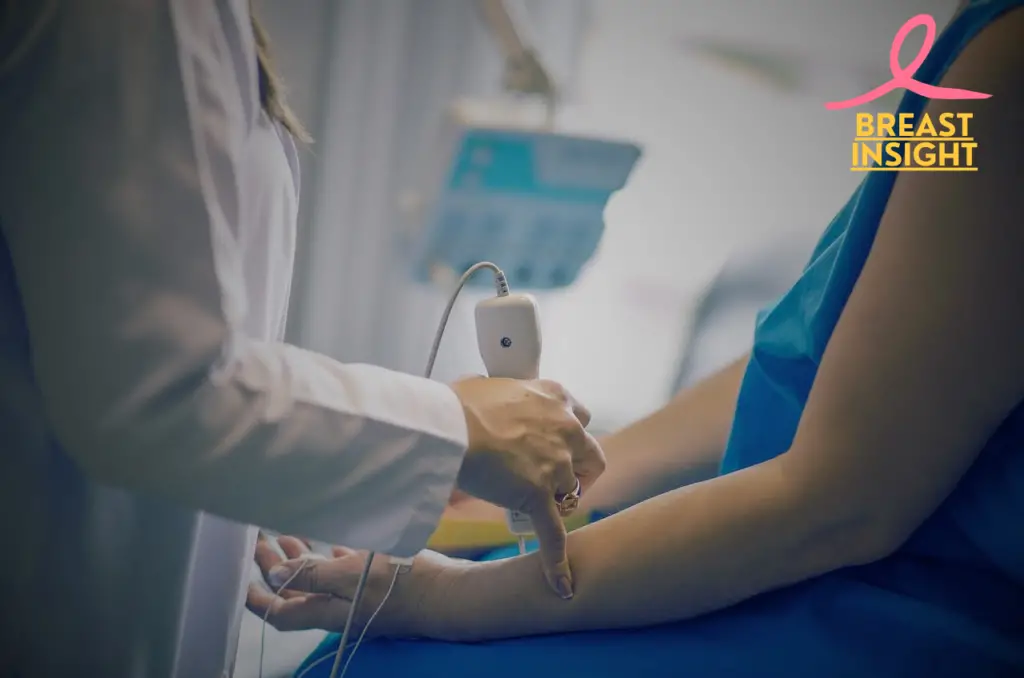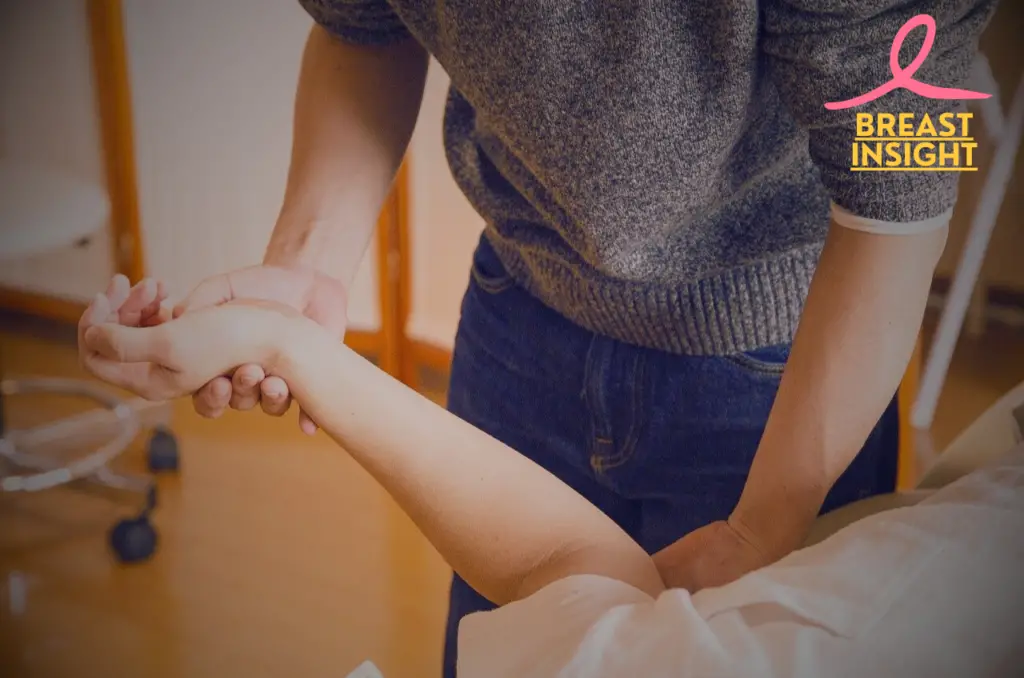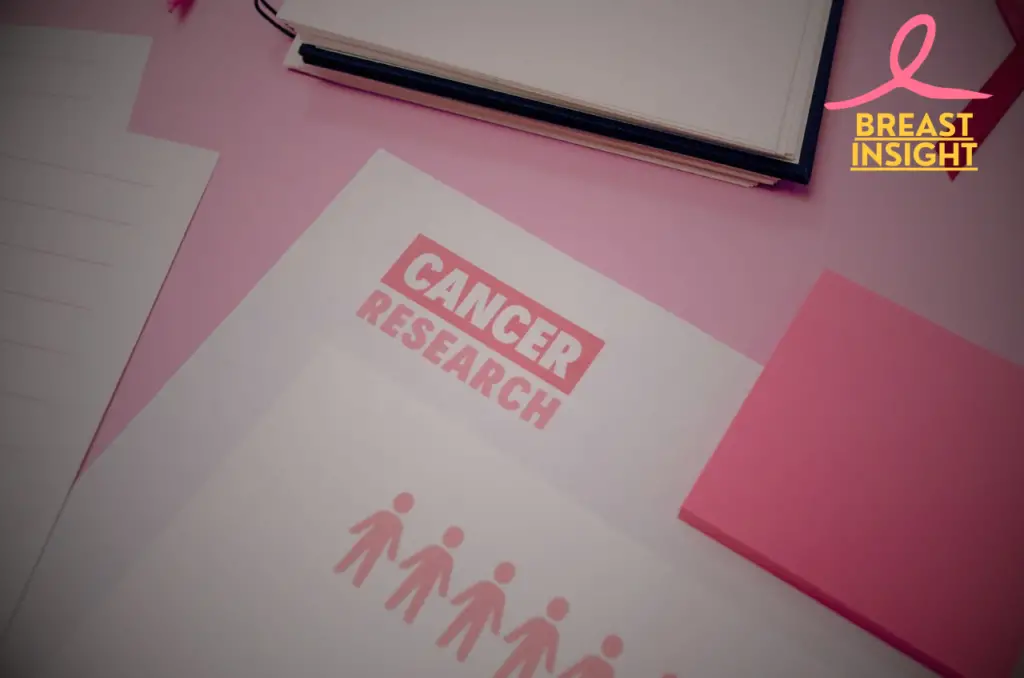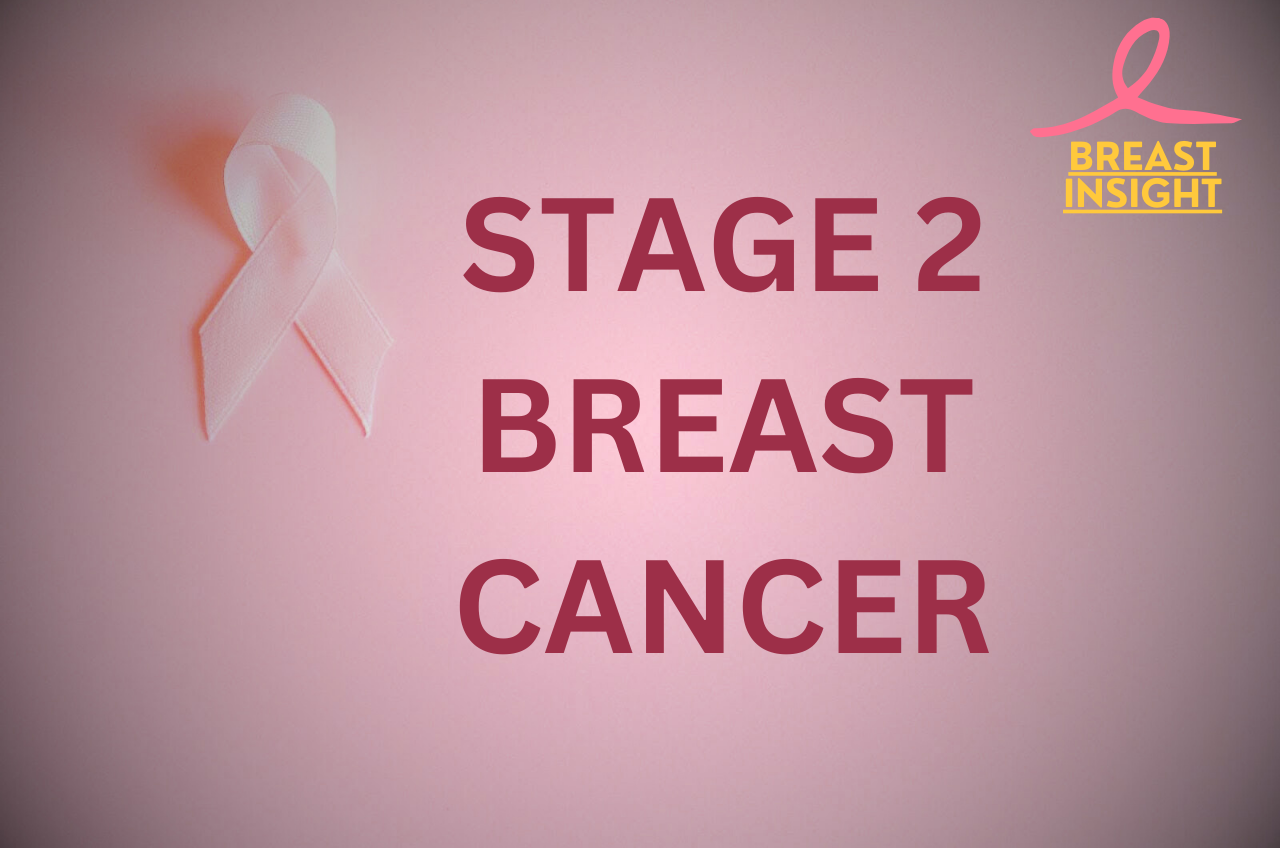When “Stage 2 breast cancer” is heard, the heart skips a beat. This diagnosis cuts across thousands of women and men yearly, marking a defining moment in the journey they will undertake regarding their cancer. However, the truth is that it is not the end-it is the beginning of a battle that thousands have beaten before you.
Mastering the essence of Stage 2 breast cancer is essential as it represents the most treatable phase with encouraging outcomes. Although it is more advanced compared to Stage 1, it still finds its place as an early stage of breast cancer, and the tremendous advancement made by medicine in the treatment rates is simply astounding. With advanced diagnostic techniques and state-of-the-art therapies, the treatment for Stage 2 breast cancer advances constantly.
To better understand Stage 2 breast cancer, it’s important to grasp the fundamentals of what breast cancer is—its causes, symptoms, and the journey from diagnosis to treatment. Explore this guide to learn more and empower yourself with knowledge about breast cancer.
Let’s plunge into everything you need to know about stage 2 breast cancer-starting with what it means and how it is diagnosed, all the way to examining treatment options and finding the latest research that brings new hope to patients everywhere.

Understanding Stage 2 Breast Cancer
Definition and Categorization
Stage 2 breast cancer is when the cancer has moved into surrounding tissues but has grown too big to be called Stage 1. It is classified as two categories:
- Stage 2A: Tumor is 2-5cm without involving lymph nodes, or smaller tumor with 1-3 involved lymph nodes
- Stage 2B: Tumor larger than 5cm without involving lymph nodes, or 2-5cm tumor with involved lymph nodes
Comparison with other Stages
| Stage | Primary Tumor Size | Lymph Node Involvement | Spread |
| Stage 1 | < 2cm | None or minimal | Localized |
| Stage 2 | 2-5cm | 0-3 nodes | Localized |
| Stage 3 | > 5cm | 4+ nodes | Regional |
| Stage 4 | Any size | Any number | Distant |
Common Symptoms and Signs
Common signs of Stage 2 breast cancer include:
- A palpable mass in the breast or armpit
- Changes in size or shape of the breast
- Skin changes such as dimpling or redness
- Changes in the nipple, or discharge
- Breast tenderness or pain
- Swelling under the arm
Some of these symptoms are more pronounced than in Stage 1 but do not normally spread to areas other than the breast and related lymph nodes. Early evaluation is very important to assure the best possible treatment.
It’s also important to note that breast cancer doesn’t just affect women—male breast cancer is real and requires just as much attention. Learn more about the realities of male breast cancer and how it’s diagnosed and treated.
Having understood what Stage 2 breast cancer is, we will now discuss how to diagnose this disease in various ways.

Diagnostic Methods
Physical Examination Procedure
The first line of diagnosis is a physical examination in which doctors examine both breasts and lymph nodes for:
- Lumps or masses
- Changes in skin texture
- Nipple irregularities
- Enlarged lymph nodes
Imaging Tests
These imaging tests can confirm as well as assess the extent of cancer:
| Test Type | Purpose | Key Features |
| Mammogram | Primary screening | Detailed breast X-ray |
| Ultrasound | Mass evaluation | Distinguishes solid vs fluid-filled masses |
| MRI | Additional screening | Provides detailed soft tissue images |
Biopsy Procedures
The sampling of tissue samples is crucial for an accurate diagnosis. Of these biopsy types, the following are common:
- Fine-needle aspiration (FNA)
- Core needle biopsy
- Surgical biopsy
Staging Tests
For establishing whether the cancer has spread or not, doctors do:
- CT scans of chest and abdomen
- Bone scans
- PET scans
- Blood tests for tumor markers
These comprehensive diagnostic procedures help determine the actual size of the tumor and whether cancer cells have spread to lymph nodes, two crucial factors establishing Stage 2 breast cancer. The results guide further planning on treatment and serve as a valuable source of prognostic information.
After diagnosis and treatment, many patients wonder about life beyond cancer, including intimate aspects like sexual health. For guidance and solutions, explore our insights on sexual life after breast cancer to regain confidence and intimacy.
With a comprehensive understanding of how Stage 2 breast cancer is diagnosed, let’s discuss common treatment alternatives available for patients.

Treatment Options
Surgery Types
- Breast-conserving surgery (lumpectomy)
- Mastectomy (simple or modified radical)
- Lymph node excision (sentinel or axillary)
| Surgery Type | Description | Recovery Time |
| Lumpectomy | Removes tumor while preserving breast | 2-4 weeks |
| Mastectomy | Removes entire breast tissue | 4-6 weeks |
| Lymph node surgery | Removes affected lymph nodes | 2-4 weeks |
Radiation Therapy
Typically administered after surgery, radiation therapy targets remaining cancer cells. Treatment usually involves:
- Daily sessions, for 3-6 weeks
- External beam radiation
- Possible boost radiation
Chemotherapy Protocols
Some common protocols include:
- AC-T (Adriamycin/Cyclophosphamide followed by Taxol)
- TC (Taxotere/Cyclophosphamide)
- Treatment cycles every 2-3 weeks for 4-6 months
Hormone Therapy
For hormone receptor-positive cancers:
- Tamoxifen for pre-menopausal women
- Aromatase inhibitors for post-menopausal women
- Treatment period; 5-10 years
Targeted Treatments
Specific medications according to cancer characteristics:
- Herceptin for HER2-positive cancers
- Perjeta as combination therapy
- CDK 4/6 inhibitors in hormone-positive patients
Treatment options are usually tailored according to the size of the tumors, whether there are lymph nodes, and if a tumor is hormone positive. Which combination and what sequence will depend upon each case.
While understanding treatment options is vital, taking steps to reduce breast cancer risk is equally important. Learn how to break risky habits to lower your risk of breast cancer and make proactive lifestyle choices today.
Next, we’ll examine the survival rates and prognosis associated with these treatment approaches.

Survival rates and prognosis
Statistical Overview
The 5-year survival rate for stage 2 breast cancer usually ranges from 85% to 99%. It means that 85-99 in every 100 diagnosed with stage 2 breast cancer live for at least 5 years following diagnosis. More precise statistics depend upon whether it is a stage 2A or a stage 2B cancer.
| Stage | 5-Year Survival Rate |
| 2A | 90-99% |
| 2B | 85-95% |
Elements Influencing Survival
Several key factors influence individual prognosis:
- Hormone receptor status (ER/PR positive or negative)
- HER2 Status
- Age at diagnosis
- Overall health condition
- Response to treatment
- Tumor grade and size
- Lymph nodes involvement
Quality of Life Considerations
Most survivors of stage 2 breast cancer enjoy a good quality of life following their treatment. Common adjustments consist of:
- Regular follow-up visits
- Lifestyle modifications such as:
- Balanced diet
- Regular exercise
- Stress management
- Psychological and emotional support
- Monitoring for potential recurrence
Advances in early detection and treatment have significantly improved outcomes. For those interested in exploring earlier stages of detection, understanding Stage 0 breast cancer is a great way to gain insight into the earliest signs of the disease and preventative measures.
With modern treatment advances and improved early detection, many patients survive well. The psycho-emotional impact often subsides later on, but support groups and counseling prove to be very helpful in recovery. Let’s now look at the findings of all current research and advances made in the management of stage 2 breast cancers.

Living With Stage 2 Breast Cancer
Coping Strategies
- Practice mindfulness and meditation
- Maintain a journal to monitor your emotions
- Join cancer-specific exercise programs
- Keep open communication with family
- Seek professional counseling when needed
Support Systems
| Type of Support | Benefits |
| Family & Friends | Emotional comfort, daily assistance |
| Support Groups | Shared experiences, practical tips |
| Professional Help | Expert guidance, mental health care |
| Online Communities | 24/7 access, worldwide connection |
Lifestyle Changes
- Adopt a balanced diet with plenty of fruits and vegetables
- Moderate physical activity 30 minutes per day
- Sleep for enough hours: 7-8 hours
- Alleviate stress by embracing relaxation techniques
- Limit alcohol intake
- Quit smoking if applicable
Follow-up care
Consistent follow-up care is vital for tracking recovery and averting any relapse.
- Schedule frequent meetings with cancer doctors
- Undergo appropriate imaging studies
- Complete physical examinations every 3-6 months
- Monitor and record any developing symptoms
- Maintain detailed medical history records.
Being proactive about self-care and maintaining consistent medical monitoring truly reflects such a quality improvement in life before and after treatment. Most survivors discover joining support groups helpful in terms of emotional support and practical guidance. To better understand how earlier stages of breast cancer are managed, check out our comprehensive guide on Stage 1 Breast Cancer: From Fear to Fighting Back. This resource offers valuable insights into early detection and treatment, empowering you with knowledge. Appropriate care, emotional encouragement and lifestyle changes really provided a holistic approach towards recovery.
With your newfound understanding of daily life management amidst stage 2 breast cancer, it is now the time to stride ahead and understand the new age research and medical developments shaping the future possibilities.

Research and development
Latest Treatment Developments
Recent breakthroughs in stage 2 breast cancer treatment have revolutionized patient care. Targeted therapies and immunotherapy approaches have shown promising results in clinical settings. Key developments include:
- CDK4/6 inhibitors in combination with hormone therapy
- New HER2-Targeted Therapies
- Better radiologic treatment modalities
- Personalized medicine approaches that rely on genetic profiling
Clinical Trials
Current clinical trials are now testing a combination and new therapeutic agents. Summaries of some of the major trials currently running appear below:
| Trial Type | Focus Area | Potential Benefits |
| Immunotherapy | Checkpoint inhibitors | Enhanced immune response |
| Targeted Therapy | New drug combinations | Reduced side effects |
| Precision Medicine | Genetic markers | Personalized treatment |
| Minimally Invasive | Surgical techniques | Faster recovery |
Future Therapeutic Options
Emerging technologies and approaches for treatment are immensely promising:
- Artificially intelligent-aided treatment planning
- Liquid biopsy for real-time monitoring
- CRISPR gene editing applications
- Nanoparticle drug delivery systems
- Vaccine-based preventive strategies
These advances are shifting the trajectory of second-line breast cancer treatment, opening pathways that are not only more accurate but also less invasive and more effective. For patients, staying informed about self-care is just as crucial. Incorporating steps like regular self-examinations can empower early detection, which plays a pivotal role in breast cancer management. Learn more by exploring our guide on Steps of Breast Self-Examination. Empower yourself with knowledge and take proactive steps today!
The integration of AI with molecular diagnostics is creating a pathway toward treatment progressively more personalized and tailor-made. Having detailed the recent breakthroughs in breast cancer research, it remains important to understand how these advancements impact everyday living for the stage 2 breast cancer patient.

Conclusion
Stage 2 breast cancer, though stern, has a good prognosis with medical science coupled with the understanding and treatment facilities available today. Diagnostic possibilities such as mammography and biopsy, surgical remedies, chemotherapy, and radiation treatments have provided a way out for many. The encouraging five-year survival rates imply that early detection and proper medical attention can bring about beneficial outcomes.
Remember, a breast cancer diagnosis does not define you. People thrive and lead active lives with great support networks, changed lifestyles, and regular medical check-ins. Stay up to date with the latest research studies and work closely with your healthcare team to present the most individualized treatment plan for your circumstances.
Frequently Asked Questions (FAQs)
What are the survival rates for Stage 2 breast cancer?
Survival rates for Stage 2 breast cancer are generally quite good. In fact, the American Cancer Society reports a 5-year relative survival rate for females diagnosed with Stage 2 breast cancer at about 93%. The overall outcome for individuals may vary depending on other factors: tumor size, amount of lymph node involvement, and general health status. Adherence to regular follow-ups and treatment interventions increases the chances of survival.
What are the common treatment options for Stage 2 breast cancer?
Treatments for Stage 2 breast cancer include a combination of surgery, chemotherapy, radiation therapy, hormonal therapy, and targeted therapy. All of these are usually selected based on the characteristics of the tumor itself, hormone receptor status, and treatment choices of the patient. Most are lumpectomies combined with chemotherapy or radiation for the residual presence of cancer cells.
How is Stage 2 breast cancer diagnosed?
Stage 2 breast cancer diagnosis includes various diagnostic procedures such as a mammogram, ultrasound, and biopsy. A mammogram can detect abnormal tissue growth. Ultrasounds then become crucial in analyzing the characteristics of these lumps. A biopsy is critical in knowing if there indeed is cancer. Further biopsy also mentions the kind and grade of the tumor, which ultimately determines the treatment to be followed.
Can lifestyle changes help reduce the risk of breast cancer?
Indeed, preventative measures using lifestyle can significantly contribute to the decline in the likelihood of breast cancer. Maintaining a healthy weight, regular physical activity, moderate use of alcohol, and also avoiding tobacco product intake are beneficial approaches. Moreover, a well-balanced diet with higher intakes of fruits, vegetables, and whole grains contributes to beneficial health and decreases the risk of cancer.


Thanks for a marvelous posting! I truly enjoyed reading it, you will be a great
author.I will be sure to bookmark your blog and definitely will come back sometime soon. I want to encourage you to continue your great writing,
have a nice weekend!